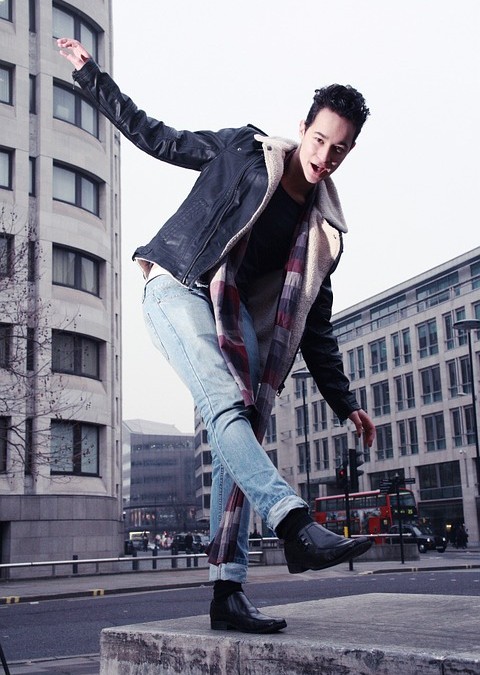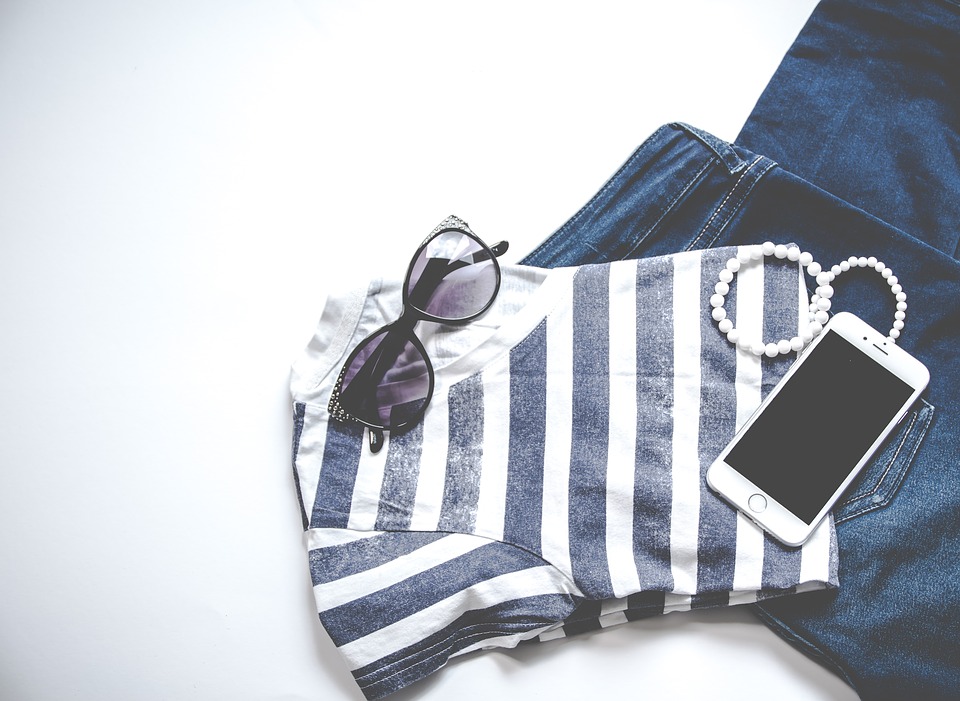Have you noticed blue discoloration on your shoes or footwear after wearing jeans? If so, the problem could be attributed to your jeans bleeding some of their dye. Regardless of the cut, it’s not uncommon for jeans to bleed their color onto shoes. The blue dye essentially leaches from the jeans, at which point it sticks to your shoes and changes their color. You can usually wash your shoes to remove the dye and restore their original appearance. However, it’s recommended that you follow some basic steps to prevent your jeans from bleeding on your shoes in the first place.
Choose Washed Denim Jeans
Jeans made of washed denim are less likely to bleed color on your shoes than jeans made of dry denim. What’s the difference between washed and dry denim exactly? Washed denim jeans are made of denim that’s been washed as part of the production cycle, whereas raw denim jeans are made of denim that hasn’t been washed. When manufacturers wash their denim, it helps remove some of the loose dye so that it’s less likely to bleed on shoes, garments or other items. Therefore, it’s recommended that you choose washed denim jeans to protect your shoes from bleeding dye.
Avoid Excessively Long Jeans
A pair of properly fitted jeans should stop around your ankles, though without actually revealing any of your skin. If they extend past your ankles, it usually means that are too long and, thus, should be replaced with a shorter pair. Not only do excessively long jeans look bad; they also increase the risk of bleeding dye. When wearing excessively long jeans, the bottom of the legs will rub against your shoes. As this occurs, some of the denim’s dye may bleed on your shoes, causing discoloration.
Roll Up the Bottom of Your Jeans
Alternatively, you can roll up the bottom of your jeans so that they don’t touch your shoes. Known as “cuffing,” this involving rolling up about 1 or 2 inches of the denim at the bottom of your jeans. Assuming the cuff stays in place, which it should when done correctly, the bottom of your jeans shouldn’t touch your shoes, thereby protecting your shoes from any bleeding dye.
Choose Selvedge Denim Jeans
Although they cost more than standard jeans, selvedge jeans are less likely to bleed on your shoes. Contrary to popular belief, selvedge denim isn’t a special or unique type of denim. The term “selvedge” refers to a construction process in which the ends of the denim, including the bottom of the pant legs, are cuffed and sewn together. The primary purpose of selvedge denim is to protect the edges from unraveling. As a side benefit, however, they also reduce the risk of bleeding dye. You can expect to pay more for jeans made of selvedge denim than traditional denim. However, most people will agree that it’s well worth the investment. Selvedge denim jeans offer an unparalleled level of quality and attention to detail, making them the perfect addition to your wardrobe.
Wash Your Jeans Several Times
You can reduce the risk of bleeding dye with your jeans by washing them several times. You don’t have to necessarily wash them each time you wear them, but you should wash new denim jeans at least two or three times to help remove any loose and lingering dye. Failure to wash a new pair of jeans could result in dye bleeding on your shoes. By washing them two or three times, however, this shouldn’t happen, especially when used in conjunction with the other preventative measures described here.
Wear Shoes in the Same Color as Your Jeans
This won’t prevent your jeans from bleeding on your shoes. Nonetheless, it will minimize any permanent damage if your jeans happen to bleed on them. If you’re wearing a pair of light blue jeans, for example, consider wearing shoes in the same light blue color. This way, if your jeans bleed, they won’t change the color or appearance of your shoes. You won’t always have the luxury of wearing shoes in the same color as your jeans. But if and when you do, color coordinating your jeans and shoes can protect your footwear from bleeding dye.
Wear Shoes Over Your Jeans
Another way to protect your shoes from bleeding dye is to wear them over the bottom of your jeans. This has actually become a popular fashion trend among women. When wearing jeans with a slim design, such as skinny jeans, you can tuck the bottom of your jeans under the top of your shoes. It’s a fun way to dress up your outfit. Most importantly, it prevents dye from bleeding on the outside of your shoes. Granted, dye may steel bleed on the inside of your shoes, but it won’t be noticeable to anyone other than you.
Choose High-Quality Denim Jeans
The single most important thing you can do to protect your shoes from bleeding dye when wearing jeans is to choose high-quality denim jeans. Reputable manufacturers know how to produce jeans that don’t bleed dye. They use premium denim fabric as well as cutting-edge craftsmanship techniques to produce jeans with a superior quality compared to their counterparts. So, where do you find high-quality denim jeans such as this? Look no further than MakeYourOwnJeans. We offer one of the largest selections of high-quality designer jeans at unbeatable prices. You can even specify your own measurements when ordering a pair. We’ll use these measurements to create a custom-fitted pair of denim jeans specifically for you.
Keep Them Dry
Finally, try to keep your jeans dry when wearing them. If your jeans get wet — either from rain or spilled drinks — they may bleed dye on your shoes. If your jeans are kept dry, on the other hand, this shouldn’t occur. So, if you discover that your jeans are wet, dry them promptly so that they won’t bleed dye on your shoes.












